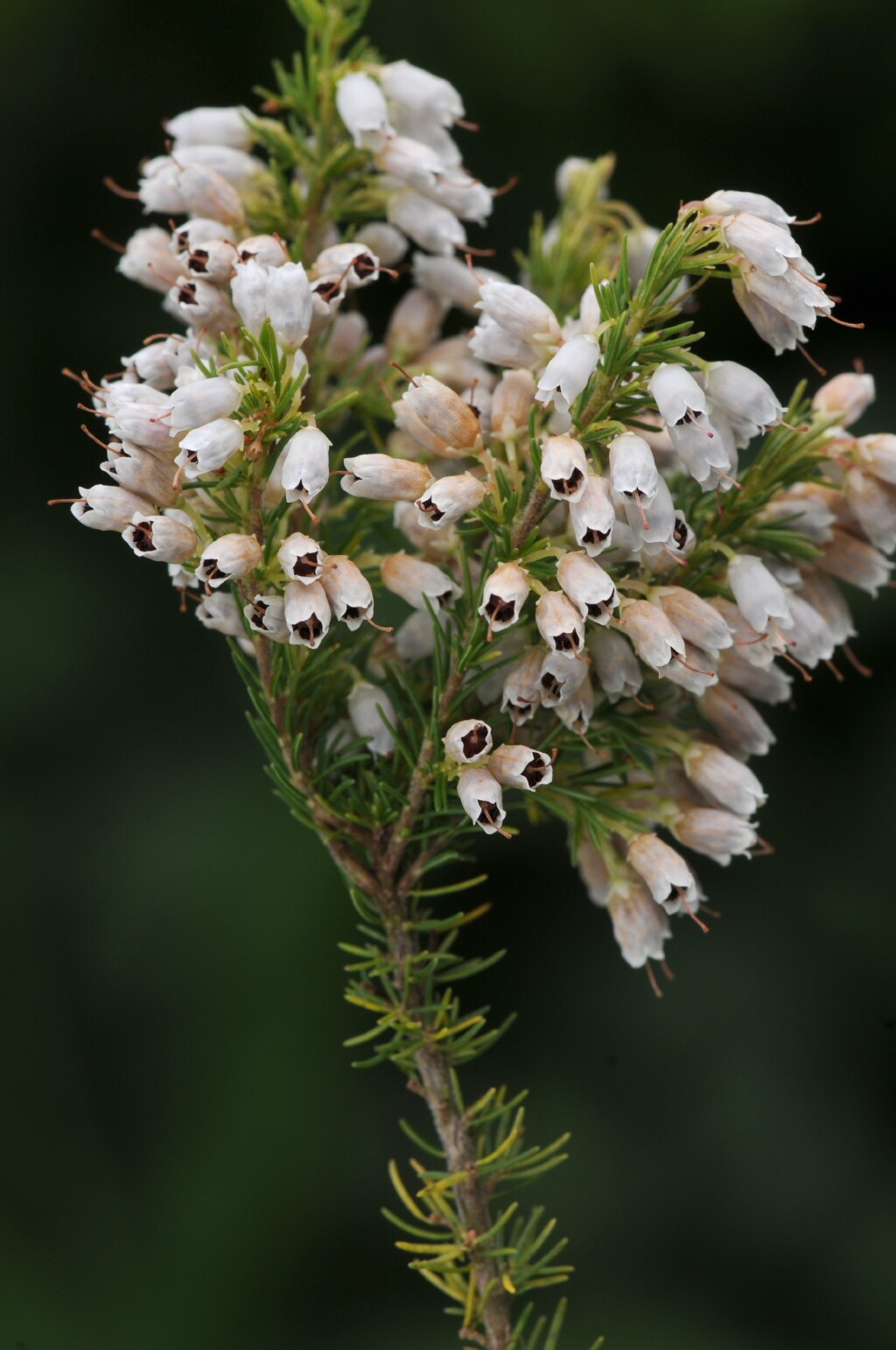Erica lusitanica
Rudolphi Spanish HeathErect, usually slender shrub to c. 2 m high, young stems densely hispid with simple hairs. Leaves in approximate whorls of (3–)4, linear, 4–7 mm long, c. 0.5 mm wide, margins acute or obtuse, entire or minutely denticulate. Flowers paired or in clusters of 3 or 4, terminal on very short lateral branchlets, usually profuse and ± obscuring upper branches; bracteoles 3, c. 0.5 mm long, the lower one inserted distinctly below upper pair; sepals 1–1.5 mm long; corolla campanulate, 4–5 mm long, white to pink, lobes rounded, 0.5–1 mm long, slightly spreading; stamens included in corolla; style exserted from corolla after anthesis; locules of anthers fused, c. 1 mm long, each with basal awn-like appendage c. 0.5 mm long. Capsule ellipsoid, c. 3 mm long. Flowers Jun.–Sep.
Wim, GleP, VVP, GipP, OtP, WaP, Gold, CVU, GGr, DunT, NIS, EGL, EGU, HSF, HNF, OtR, Strz, VAlp. Also naturalised SA, NSW, Tas. Native to south-western Europe. Common in heath and woodland communities in lowlands and foothills, particularly in eastern suburbs of Melbourne, scattered elsewhere, and increasing in range (e.g. from Heywood in the far south-west, to Orbost in the east and Beechworth in the north-east).
Walsh, N.G. (1996). Ericaceae. In: Walsh, N.G.; Entwisle, T.J., Flora of Victoria Vol. 3, Dicotyledons Winteraceae to Myrtaceae, pp. 509–514. Inkata Press, Melbourne.
 Spinning
Spinning



